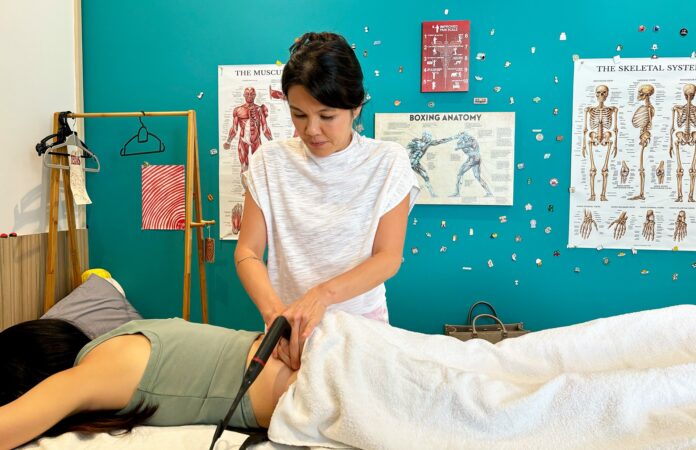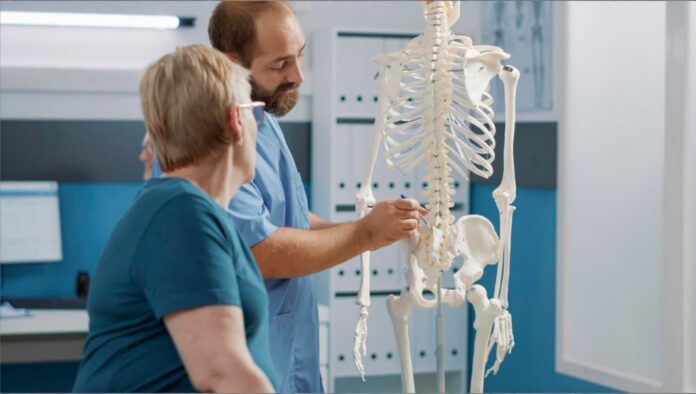Chronic back pain is not just an inconvenience; it is one of the most widespread health burdens in the modern world. The World Health Organization notes that over half a billion people worldwide suffer from back-related problems at any given time.
In many cases, what begins as an occasional ache develops into a persistent condition that interferes with work, family life, and sleep. Orthopedic specialists are central to this conversation because they combine diagnostic expertise with a wide array of treatment options designed to bring lasting relief.
For patients searching for answers, the key is knowing what really works, when to seek specialist care, and how lifestyle choices tie into long-term recovery.
Why Chronic Back Pain Cannot Be Ignored

Back pain that lasts beyond 12 weeks is considered chronic, and statistics show it accounts for nearly 30% of all musculoskeletal consultations worldwide. Unlike acute discomfort, which may resolve after rest and self-care, chronic pain is far more persistent and often worsens without intervention.
It can stem from degenerative disc disease, arthritis in the spine, or nerve compression caused by herniated discs. Left untreated, it may lead to reduced mobility, muscle weakness, and reliance on daily medication. Seeking help from an orthopedic specialist is not just about pain relief but about protecting long-term function.
Many patients do not realize that early professional care can reduce the need for invasive treatment later.
The Importance of a Comprehensive Orthopedic Evaluation

An orthopedic assessment is rarely just about pointing out the source of pain. Specialists combine imaging techniques such as MRI or CT scans with detailed physical examinations to create a fuller picture. Beyond the imaging, posture evaluation, flexibility testing, and gait analysis reveal how the spine and surrounding muscles interact. The consultation also explores lifestyle habits, occupational risks, and past medical conditions that might contribute to the problem.
For patients seeking trusted guidance, resources like www.amirdaher.com provide specialized expertise and clear treatment pathways. Access to this type of professional knowledge ensures patients receive plans designed around their unique needs, rather than one-size-fits-all approaches.
Conservative Treatments That Form the First Line of Care
Orthopedic specialists generally recommend conservative therapies before moving to surgery. These approaches focus on restoring function, reducing inflammation, and preventing relapse.
- Physical therapy: Structured programs target core muscles that stabilize the spine. Research in The Spine Journal shows patients engaged in consistent therapy are 40% less likely to need surgery.
- Medication: Short courses of anti-inflammatories or nerve-targeting agents help manage flare-ups. Muscle relaxants may be prescribed for acute spasm relief.
- Injections: Epidural steroid injections or nerve blocks provide temporary relief for patients with severe nerve compression.
The success of conservative management lies in its layered effect—combining exercises, medical care, and ergonomic changes ensures that the benefits extend beyond a few weeks of treatment.
When Surgical Options Become Necessary

Despite advances in non-surgical care, some patients continue to experience disabling pain. Surgery may be recommended when symptoms include severe nerve compression, spinal instability, or loss of motor function. The two most common procedures are:
- Microdiscectomy, where fragments of a herniated disc pressing on a nerve are removed.
- Spinal fusion, which stabilizes vertebrae affected by degenerative disease.
Success rates are encouraging. According to the American Academy of Orthopaedic Surgeons, over 80% of patients undergoing targeted spinal procedures report significant improvements in pain and mobility. Modern techniques often minimize recovery time, with many patients resuming normal activities within weeks rather than months.
Lifestyle Choices That Strengthen Recovery
Long-term success depends heavily on patient commitment outside the clinic. Orthopedic specialists emphasize simple but powerful lifestyle adjustments:
- Maintain a healthy weight: Reducing excess weight lowers stress on spinal joints.
- Exercise smartly: Core-strengthening routines protect the lower back, while walking remains one of the safest forms of movement.
- Limit prolonged sitting: Studies show sitting for more than six hours daily doubles the risk of developing chronic lumbar pain.
- Use ergonomic furniture: Properly designed chairs and desks cut down on unnecessary strain.
A large-scale workplace study in Europe found that employees provided with ergonomic setups reported 33% fewer back complaints compared to those without. The takeaway is clear—daily habits influence spinal health as much as medical treatments.
Psychological Burden of Living With Back Pain

Chronic pain is never just physical. Patients often face higher rates of anxiety and depression, making recovery a multi-layered challenge. Studies reveal that as many as 40% of chronic back pain sufferers report symptoms of depression.
The constant discomfort limits social interactions and reduces confidence in performing even simple daily tasks. Orthopedic specialists are increasingly advocating for holistic care that incorporates counseling, stress management strategies, and cognitive-behavioral therapy.
Research published in Pain Medicine shows that integrated approaches reduce pain severity scores by up to 25% compared to physical therapy alone. When patients feel supported both mentally and physically, recovery rates improve dramatically.
The Role of Advanced Technologies in Treatment
Modern orthopedics benefits from technology that was unthinkable a generation ago. Robotic-assisted surgeries improve precision, lowering complication risks.
Diagnostic tools like dynamic MRI provide more accurate insights into spinal mechanics. Telemedicine consultations allow ongoing monitoring without the need for frequent hospital visits.
A survey by the American Hospital Association found that 70% of patients managing chronic conditions value digital check-ins as part of their treatment plans. Such technologies give patients real-time access to specialist guidance and reduce the burden of travel for those living with persistent pain.
Building a Long-Term Strategy With Orthopedic Guidance

The most effective back pain management strategies look beyond immediate relief. Specialists often design tiered plans that evolve with the patient. For example, a typical pathway might begin with physiotherapy and ergonomic changes, progress to injections if symptoms persist, and only then consider surgical options.
Regular reassessments ensure treatments remain aligned with patient progress. Many patients report the greatest improvements not from one single intervention but from a combination of medical care, personal discipline, and environmental adjustments.
Closing Thoughts on Chronic Back Pain Care
Chronic back pain is one of the most common yet misunderstood health conditions. Too often patients accept it as inevitable, not realizing that structured care can restore quality of life.
Orthopedic specialists provide the expertise needed to accurately diagnose, treat effectively, and prevent future complications.
With the right combination of conservative therapy, advanced interventions, lifestyle adjustments, and psychological support, recovery is not only possible but sustainable.
Access to expert knowledge and care can make the difference between years of frustration and a return to active, pain-free living.







